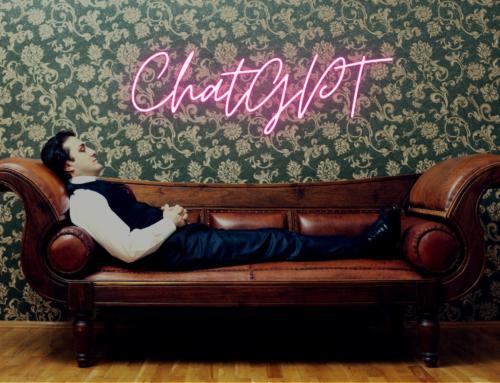The role of CEO is not a destination but a journey.
That journey can be a solitary one.
But an unknown secret is that much of the journey is really about your growth personally and professionally. It’s about learning how to deal with stress tests and crises. You’re always at war with yourself, mastering that growth one day at a time.
I spoke with a close friend of mine, Promise Phelon about this.
She has been through the CEO journey several times. Often, she says to be a CEO and an entrepreneur; you have to be a growth warrior.
After spending more than a decade as a Silicon Valley as an entrepreneur and raising millions for companies in the technology and SaaS industries, Promise founded Growth Warrior Capital. She works with underdog entrepreneurs to gain funding, transform markets, and create profitable opportunities while providing the resources and tools for them to accelerate their businesses.
In this conversation, we discuss her new book, The Way of The Growth Warrior: Seven Non-Negotiable Skills to Scale Your Business in Uncertain Times. We talk about serial entrepreneurship, what it means to be an underdog, and how to be a growth warrior. We also talk about how to lead during a crisis, and we use her own experiences to tell the story.
I hope you enjoy our conversation!

JB: How did you get here, and what does being a serial entrepreneur mean to you? What’s your story?
PP: I wrote this book, The Way of The Growth Warrior, because at that stage of my life, my early 40s, I got to this point where I was like my story is evolving, but I also want to kind of put a stake in the ground and ask myself, “Where have I been? How did I get here?” As an African American woman in tech, in Silicon Valley, I look back at my successes–selling my company in college, going into grad school, getting a mentor, (Barbara Britton, who got me connected into Silicon Valley), being part of BEA’s run-up, starting a couple of companies, having some be very successful and one not, then going into a stream of like venture-backed turnarounds, and c-level positions where I’m raising money–I realized that I am not stopping to ask myself “How did I get here?” In writing the book, I was able to look at it in retrospect. So, I think three things got me here:
- I was fortunate in relationships. I met Barbara Britton, Ivan Koon, and Bill Campbell. I had all of these relationships where people were not only mentors, but they were like, “Hey, I’m going to give you a chance you don’t deserve right now because I can see myself in your future.”
- I think “serial” used to mean “I’ve done a lot of things. I have a lot of experience.” I believe that a serial entrepreneur is a growth-minded person looking for that next opportunity for growth. It’s a proclamation, and It’s not regression, it’s not looking back and saying, “These are the serial things I’ve done.” It’s saying, “You’re gonna always expect to see me doing something that is pushing my limits.”
- I have finally accepted and understand my superpower. I had to give up the desire and the idea of who I thought I was going to be. Where I am now and how I’ve gotten here is just said, “Okay, I have superpowers that exist in a certain area, and they’re highly nuanced. So, I’m going to find ways to use, expose, and leverage those for the benefit of myself and others.”
So, in terms of how I got here: It’s all about relationships. It’s a proclamation for growth. It’s accepting that there are areas in which I would love to be phenomenal and be self-expressed, but there are areas in which I am, and I feel great about those things.
JB: What was your first business?
PP: My mother got lupus when I was in college and couldn’t afford to pay anymore. So, I started housesitting dogs. That was survival, but I realized it’s not scalable. Then, I started a company that was a communications firm that wrote content for physicians and did marketing. We built an automation tool that would build press releases based on data and stuff on the internet. I sold that to my largest customer the last year that I was in college. That funded me going to grad school.
JB: Your first time as a CEO– every CEO perceives their first time differently–what was yours like?
PP: I went on to start a services company, which became a tech-enabled services company. I started this company in a downturn, kind of similar to what we’re experiencing right now. I remember someone coming to me and saying, “Hey, I want to talk to you.” I was running a company of maybe ten or so people. This person told me, “I wanted you to know that I’m going through this adoption process, and I just appreciate that you gave me that merit bump because it’s going to help me and my partner create the family of our dreams.” I was in my 20’s. I was like, “I did that? Okay.” Then I realized as a CEO that I am paying mortgages that are not my own and helping families form. People are relying on me. It created this euphoria of “I can manifest,” but it also created a lot of, “I better have my act together.”
JB: What have been some of your learnings that stay with you today?
PP: I sold my last company in 2018. I probably spent six months going, “What the heck? What am I going to do? Why am I not running another company again?” I started to focus more on mentoring others. Out of that, I read Nassim Taleb’s book after I sold my company, and it opened me up to the concept of anti-fragility– an idea that I’m helping new entrepreneurs adapt.
I think the most important thing is to make the hardest decision that you possibly can as soon as possible. When I started the Phelon Group in 2002, we thought the economy had recovered and realized in early 2003 that it hadn’t. The expansion plans that we had made were all premature. We had one big customer bolt for economic reasons. Rather than making the cuts at once, we took them in small pieces. That is incredibly hard for a business. It’s hard for the emotions and culture. But it’s tough for the leaders to continually be thinking, “Should I do it? Should I not do it? How should I do it?”
So, my advice now is to plan for this lasting for a long time and make the hardest decisions you have to make now. Do them in a way that just focuses on how much cash you can preserve for as long as possible. The second thing is to come out of it sooner. Recover before other people do. That’s when you make acquisitions. That’s when you make moves to expand. You get ahead of that curve. The last thing is to love your customers and your people in a way that you have not before. Like Brene Brown says, “Trust is the accumulated stacking of vulnerabilities.” It’s me being vulnerable, then you, then me, then you, later me, and so on. In a crisis, people let down a lot of their ego. This is the time when you will build relationships that really will last. We get so much into what’s happening, that we’re not externally reaching out, connecting mentoring, building bridges, and being as vulnerable as possible.
JB: I enjoyed your book. There are several skills that I think would be very helpful, given where we are. I want to talk about some of those. Let’s start with “crafting the story.” You talk a lot about the warrior story. “Who are you? What is your company? How do you shape that?” How would you see that changing now in this time of crisis? Do you maintain the story, or do you find opportunities to recraft the story to reposition the company as the world requires?
PP: The reason why I feel we all need a warrior story–your story in a way that is memorable, compelling, passionate, but also connected–is because, in these times, we’re all cocooning. So, rather than telling a resume story, or a bulleted kind of list of what you’ve done and where you’ve worked (which isn’t memorable, and which creates separation, because I know I didn’t get a job at Google or go to Harvard) your warrior story is looking for a connection. It is saying, “We’re going through some challenging times. Here’s what I’m living right now.”
If the warrior story tells your story in a way that connects people and allows them to see themselves in you, I would say that it’s evolving right now. I think it’s important that that story evolves. One of the companies that I mentor is in an interesting industry. It’s in the network marketing space. So they’ve built a cool technology, and that space is booming right now because it focuses on at-home professionals. It was so interesting when that CEO talked to investors about it. I mean, I had them change their whole pitch. It’s about the fact that 100% of people are going to have side hustles. So the story is no longer about the technology or the market. It’s about that one person who doesn’t have $600 for an emergency, most of our economy. Now that CEO can tell a story that we can all relate to. That connection now is an emotional one, which is the only kind of relationship that’s memorable. The warrior story is just doing that in an intentional way.
JB: You liken entrepreneurship to being a warrior. Explain where that comes from.
PP: It’s a growth warrior. The reason why is because I’m out there in battle, but my focus is on my growth. The path of the Growth Warrior all about the internal spiritual quest that being an entrepreneur puts us on. We have chosen the most unsafe route to Nirvana of any professional. The whole process is about living for growth and not for any external validation, like money. It isn’t about that. It’s about the spiritual growth that comes from this experience.
JB: You talk about pausing and reflecting. I think you have an excellent system for doing that. Sometimes wanting to do it and knowing how to do it are two different things. You talk a lot about how you’ve made a ritual out of it where you spend a certain amount of time, I believe, at the end of the day or in the morning, talking to yourself and recording yourself. Is that right?
PP: Yes, so three things. I do my morning pages. I write about gratitude for what happened yesterday and put in my intention for this day. It’s just a couple minutes to get it out. I have morning pages for when I was 16. It is absolutely insane. The second is, especially in trying times, when I was going through turnarounds, I would just sit in the car because I wanted to exit the emotion of the day or what I learned and just record it. Then on the weekend, if I were hiking or working out, I would replay all those days. That’s actually what freed me and what helped write the book. I could go back and go, “Oh, man, I remember that day fundraising or remember that board meeting.” It’s a beautiful habit because it keeps me honest with myself.
JB: It’s similar to something I talk a bit about, which is finding time for solitude. Do you find it helpful in reducing your anxiety? Because the stuff that is bouncing around in your head is now on a page, and you can see it clearly in processing.
PP: Yes! I mean, I take six hours a month, and I go away by myself, and I go to a coffee shop, and I ask myself three questions. The questions change. But the writing process is for you. It’s a forcing function. I write my Six Bullet Sunday newsletter, and you write your Mental Candy, which I take credit for because I think we started around the same time.
JB: You’re my inspiration!
PP: I’ve worked to be that!
JB: Well, I think we would be remiss if we didn’t talk about what it’s like being a CEO, that looks like we do. African Americans, immigrants, women, etc. For those out there looking to get into the game of being CEO but are unsure about it or want to understand what it’s like, what are some of the challenges? What would you say to them?
PP: Well, I didn’t go to Stanford or Harvard. I went to Southern Methodist University. Brad Smith, the former CEO of Intuit, said if you have to have a longitudinal description of your university, it’s probably an underdog school. Southern Methodist University is the Harvard of Dallas is what we like to say. But Bill Campbell told me something, and I’ll always remember it. He said, “It’s going to be hard for you. It’s going to take you longer. It’s going to be different.” So, I have two perspectives. One is if your desire for whatever it is supersedes your fear of the rejection, the repetition, and all of the things that come with being in the game and not looking like a typical or traditional CEO… if your desire isn’t greater than that fear, then don’t do it. But if your desire is, believe in it and lean in.
Imagine someone who has a unique perspective or unique understanding of a market or a cohort or a customer comes in and cracks open an opportunity no one else has thought of. It is the time for the person who doesn’t “look like a surgeon” to be hired is what I’m saying .So, go for it. It may take you longer; it may hurt a little bit. Don’t get in it for any other reason. Do it for growth.
The third thing I would say is we can’t write off the guy who we think is this Harvard educated venture investor or someone who holds the purse strings. We can’t assume that they don’t understand our story and that they’re not also an underdog. I would venture that, first of all, every CEO that you’re going to find who’s been successful is going to say it wasn’t easy. They may have a different version of difficulty than you did, but they have had challenges. When you walk into a room where you’re asking for money, or you’re asking for resources or whatever, I wouldn’t assume that that person who doesn’t look like you doesn’t have the same shared experience. I wouldn’t assume that everyone else is looking at you as a stranger. I would assume that there are brethren, and there’s fellowship out there.
JB: Which one of the skills that we didn’t cover from your book do you think would resonate with our readers?
PP: I would say the skills that people ask me a lot about, not surprisingly, are how to raise money and how to capitalize on it, especially in uncertain times. What I say is: build to exit. This is the idea that, as you are building your company, you’re not building it to sell it. Still, you’re building it with the idea that at some point, you want to understand your market, your players, your competitors, or your partners in a way that people know that your company is a valued asset. Manage it for an exit.
Those are the skills that I get into in the book, how to capitalize– all the stages and steps– from some cool stories about entrepreneurs who built to exit and then decided not to exit. There’s a difference in selling a company versus being so attractive in the market and so well regarded that people will approach you. Structuring your company and understanding how to see the difference between the two and how you execute against that is very important.
“Knowledge humanely applied makes human progress possible. It is never perfect, of course, and it is almost always provisional. But we must never stop learning, never stop asking questions, for it is the impertinent question — that challenges existing assumptions and conventional approaches — that inches toward truth.”– Frank H. T. Rhodes, President of Cornell University at Cornell’s 127th Commencement May 28, 1995.
Every entrepreneurial experience, successful or not, brings with it new knowledge. The CEO journey is full of challenges that will test your mettle.
Welcome them.
Your personal growth is the true destination. Don’t hurry the journey, for in it you will find life long learning that unlocks your true potential.
Keep fighting for growth!


